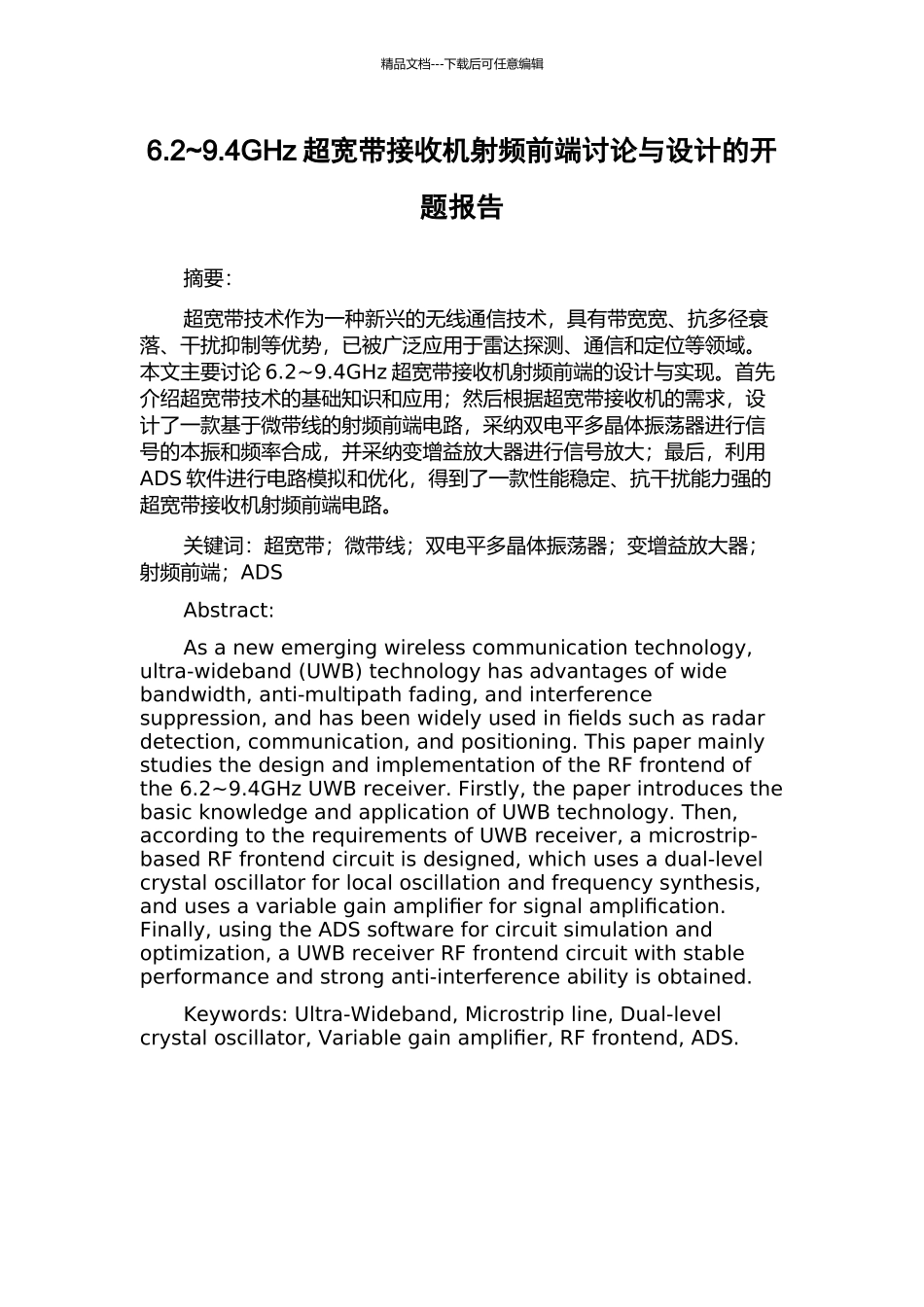精品文档---下载后可任意编辑6.2~9.4GHz 超宽带接收机射频前端讨论与设计的开题报告摘要:超宽带技术作为一种新兴的无线通信技术,具有带宽宽、抗多径衰落、干扰抑制等优势,已被广泛应用于雷达探测、通信和定位等领域。本文主要讨论 6.2~9.4GHz 超宽带接收机射频前端的设计与实现。首先介绍超宽带技术的基础知识和应用;然后根据超宽带接收机的需求,设计了一款基于微带线的射频前端电路,采纳双电平多晶体振荡器进行信号的本振和频率合成,并采纳变增益放大器进行信号放大;最后,利用ADS 软件进行电路模拟和优化,得到了一款性能稳定、抗干扰能力强的超宽带接收机射频前端电路。关键词:超宽带;微带线;双电平多晶体振荡器;变增益放大器;射频前端;ADSAbstract:As a new emerging wireless communication technology, ultra-wideband (UWB) technology has advantages of wide bandwidth, anti-multipath fading, and interference suppression, and has been widely used in fields such as radar detection, communication, and positioning. This paper mainly studies the design and implementation of the RF frontend of the 6.2~9.4GHz UWB receiver. Firstly, the paper introduces the basic knowledge and application of UWB technology. Then, according to the requirements of UWB receiver, a microstrip-based RF frontend circuit is designed, which uses a dual-level crystal oscillator for local oscillation and frequency synthesis, and uses a variable gain amplifier for signal amplification. Finally, using the ADS software for circuit simulation and optimization, a UWB receiver RF frontend circuit with stable performance and strong anti-interference ability is obtained.Keywords: Ultra-Wideband, Microstrip line, Dual-level crystal oscillator, Variable gain amplifier, RF frontend, ADS.
